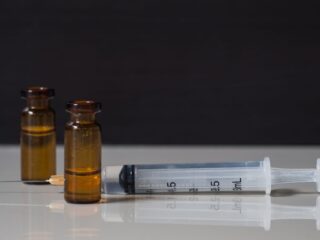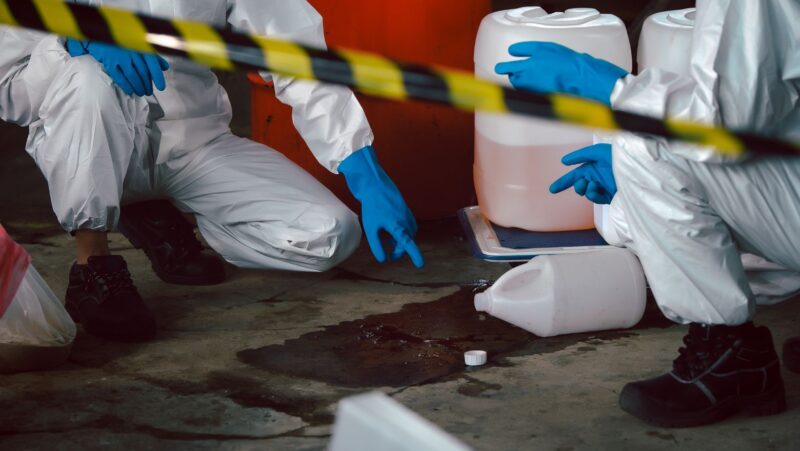
In the right hands, a spill could just be an annoyance. On the other hand, a spill that is not cleaned up correctly can cause significant disruptions to both your job and your coworkers. At worst, a spill may result in property damage or personal injury.
You should note that chemical spills involve tiny amounts of materials and pose little risk if safety measures are followed. This post will guide you on the right way to manage a spill:
Prepare for the Spill
You cannot effectively handle a spill if you aren’t adequately prepared for it. So, the first thing you should do is understand the hazards that the spill brings.
Knowing the harmful or potentially hazardous characteristics of every chemical you use or manufacture is essential to any operation. You should consider the effects of any possible spills and create suitable reaction plans before employing any chemicals.
You should also inform other workers in your vicinity about any potential hazards.
You should use the danger class of each chemical when making backup plans in case something goes wrong. When preparing for potential chemical spills, consider the chemical characteristics such as flammability, severe toxicity, corrosion, and reactivity to air or water.
Once you understand the chemical and its associated hazards, create documented protocols for responding to spills. These protocols should specify what should be done during a spill and cover topics including personnel roles, communication channels, how to use equipment for spill response, and cleanup and disposal of residue.
You should share these protocols with everyone who works with chemicals or who could help with cleanup after a spill.
Remember to review and update these procedures regularly to ensure everyone is current on the latest information.
The procedures for responding to spills should contain components such as:
- The provision of fire suppression equipment
- Proper evacuation zones and protocols
- Disposal containers for spill-cleanup materials
- A list of the necessary protective gear, safety equipment, and cleanup supplies (gloves, respirators, etc.), instructions on using them, and any required first aid procedures.

Before you begin any chemical activity, ensure the appropriate safety gear and resources for cleaning up spills are on hand and functioning correctly. Ensure that anybody involved in spill response has received the appropriate training in using equipment and cleaning up spills. Lastly, ensure all supplies and machinery are frequently inspected to guarantee proper operation when required.
Communicate When You Notice a Spill
No matter how tiny or inconsequential the spill appears, you should always report it to the person in charge and your coworkers. Asking around always helps determine the risks associated with a spill and guides cleanup techniques.
Notifying regulatory authorities may be necessary since even a minor spill might cause risks that are not immediately apparent or expose you or others to damage.
Stay away from the area while deciding how to respond to a spill. Spills come in two varieties: simple spills that you can clean up on your own and complicated spills that call for professional help.
A simple spill does not spread quickly, doesn’t harm people or property, and doesn’t harm the environment.
On the other hand, a complex spill can lead to more severe damage and should ideally be managed by experts. For professional assistance, you might consider visiting traumaservices.com.
Clean Up Simple Spills
You don’t need to notify emergency personnel when you have simple spills. While this is the case, you should note that you should contact your facility’s environmental health and safety office or another accountable individual.
Before you do this, ensure that the spill is simple and you can easily clean it up. This way you get to give accurate information about it.
When doing the cleaning, you need to be outfitted with the proper personal protective equipment, which should, at the very least, include a lab coat, protective gloves, and eye protection.
Spills with unique risks (such as acidic or reactive or spills with a splash potential) could call for additional protective gear. You should find the additional gear such as a respirator or get in touch with an expert to help you remove the spill.
To stop dust and vapors from spreading to adjacent areas, close the door and enhance ventilation (using fume hoods, for example). You should do this if the material is volatile or can produce airborne dust.
A great way to deal with simple spills is by neutralizing them. After neutralizing them, you can wipe up and flush the spills down the drain. When doing it, exercise caution, as the neutralizing process may be rather intense, producing a lot of heat and splashing.
Use soda ash or sodium bicarbonate to neutralize acids. Ascorbic acid or citric acid is ideal for neutralizing bases. After neutralizing acid or base spills, use pH paper to measure the neutralization.

You can also add absorbents to the spills. Working from the spill’s periphery into its center, add absorbents to the spill. Although untidy, absorbent materials like cat litter and vermiculite are practical and reasonably priced.
If you don’t want to deal with the dirt, you can go with spill pillows. They cost more, but they are less dirty than other absorbents.
Remember that certain substances, like concentrated sulfuric acid and hydrofluoric acid, call for specific absorbents.
It is best to scoop, rake, or otherwise transfer the neutralized spill residue or absorbent into a plastic pail or other container. Double-bag the residue in plastic bags if the liquids or powders are dry enough to absorb.
Before you transfer the waste, you may need more packaging. Powder or solid substance spills may require the addition of a dust suppressor. Ensure every container has a label with information on what is inside. If you aren’t sure about the right way to package it, get in touch with the environmental health and safety office.
Parting Shot
This is a guide on how to deal with spills. As mentioned, you can try to remove the simple spills, but for the complex ones, hiring experts to help you out is ideal.












